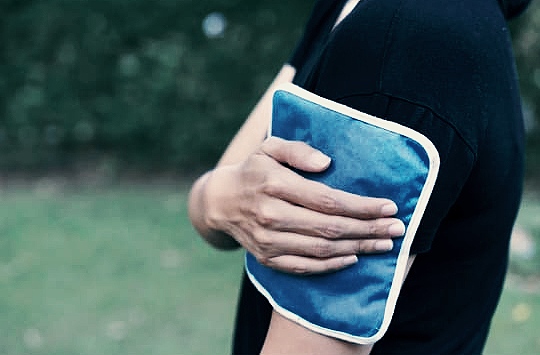Some injuries result from internal tissue damage, such as an ankle sprain. Even though there’s no break in the skin, inflammation isinduced and the area becomes red, painful, and swollen. The medical treatment for such an injury is RICE: rest, ice, compression,and elevation. Explain how RICE is helpful in injury recovery
Some injuries result from internal tissue damage, such as an ankle sprain. Even though there’s no break in the skin, inflammation is
induced and the area becomes red, painful, and swollen. The medical treatment for such an injury is RICE: rest, ice, compression,
and elevation. Explain how RICE is helpful in injury recovery
our musculoskeletal system includes bones , muscles , tendons , ligaments and soft tissues .
RICE is an acronym that stands for Rest , Ice , Compression and Elevation . This system is used as current best management practice in the first 24 to 48 hours following an acute soft tissue injury . It helps to reduce swelling , ease pain and speed up healing . RICE stands for :
REST: avoid use of injured area
ICE : applying of ace packs or bags of frozen vegetables to the affected area without them touching the skin directly .
COMPRESSION : wrapping the injured area with an elastic bandage to provide support , reduce blood flow and limit swelling .
ELEVATION : keep the area raised above the level to the heart to reduce the swelling .
The benefits of the RICE method can be explained as :
rest : immobilization prevents further injury and gives the body time to recover .
ice : cold reduces pain by numbing the affected area .
compression : pressure keeps swelling under control
elevation : keeping the injured body part above the heart reduces the swelling and the associated pain and the discomfort .
ice pack may help to numb the affected area and compression may keep the swelling under control

Following the steps given below may help to treat a mild or moderate injury . Begin immediately after an injury , and continue the treatment for next 24 to 48 hours :
rest the injured area . Avoid moving it and try to keep weight off . Use splints , braces , canes or crutches when available
ice the injury for twenty minutes , four to eight times a day . This is especially necessary within the first three days . Never allow ice to touch the skin directly.
compression is effective for up to one week . Wrap the bandage tightly enough to support the area , without cutting off the blood flow .
elevation reduces swelling and bruising by making it more difficult for blood to reach the injury . It is best to elevate the area for 2-3 hours a day .
Step by step
Solved in 2 steps with 2 images








